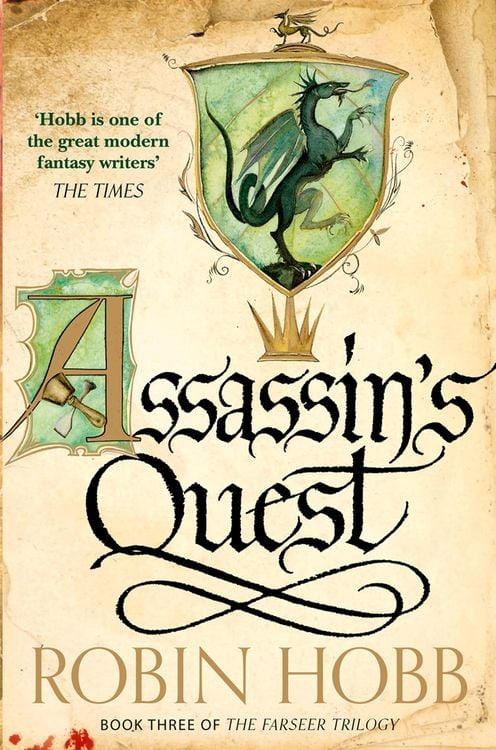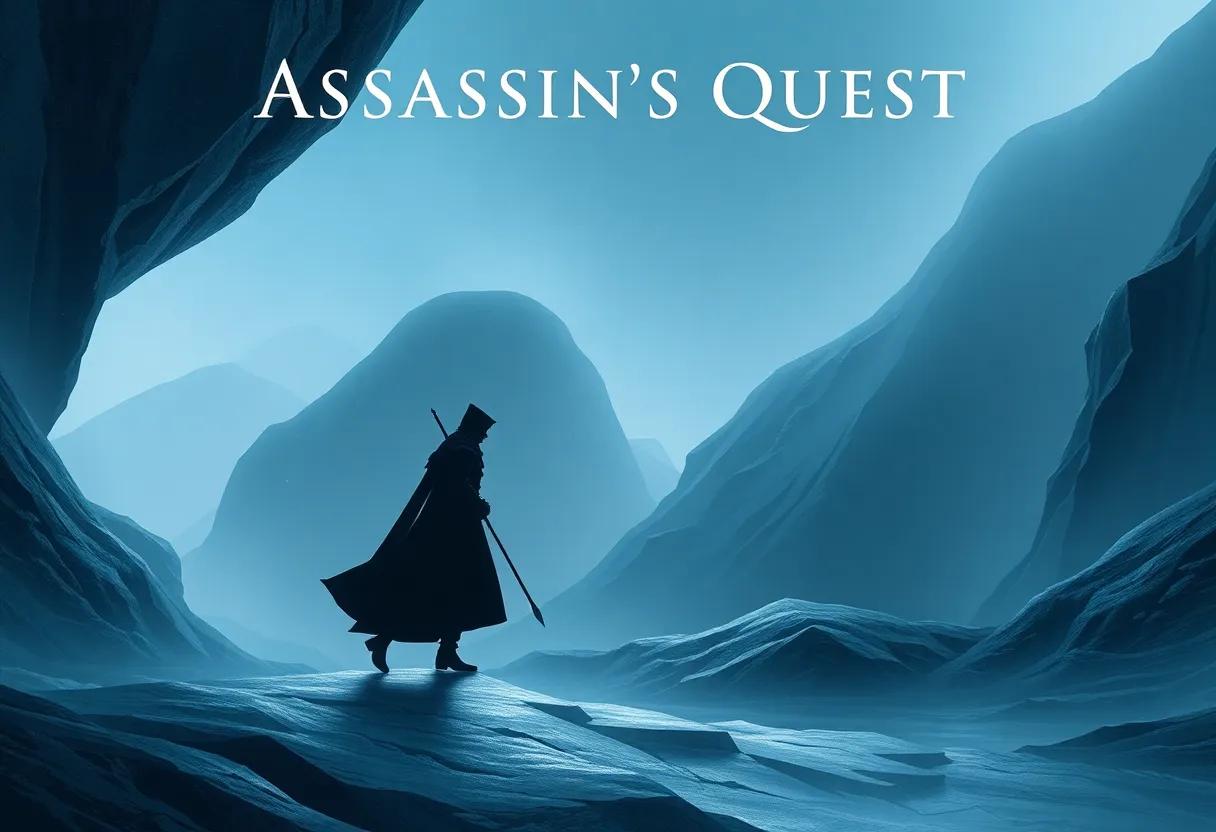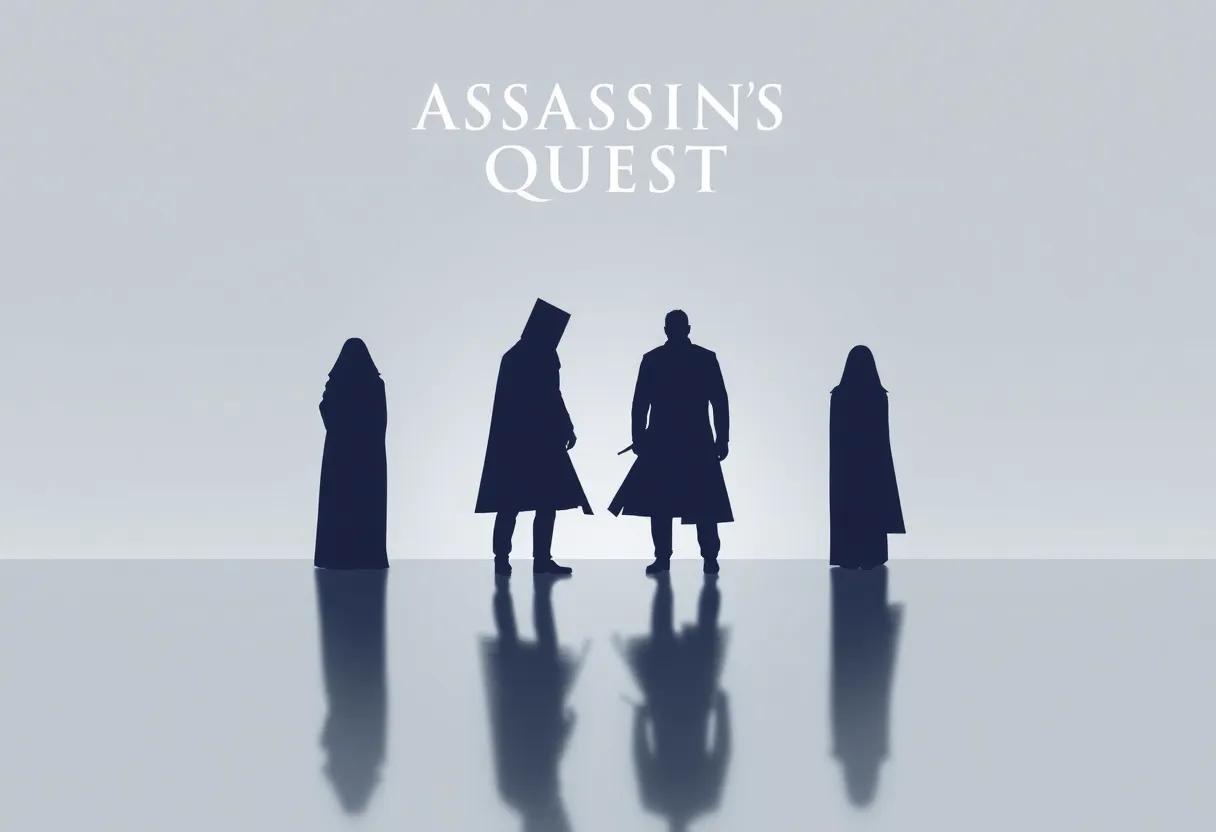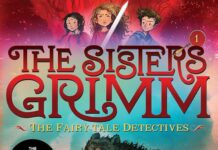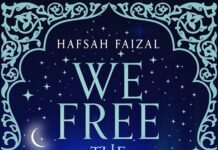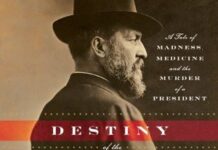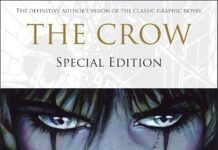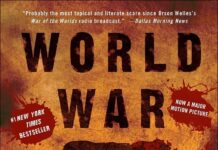In the vast landscape of fantasy literature, few narratives resonate as deeply as Robin HobbS ”Assassin’s Quest.” The third installment in the acclaimed Farseer Trilogy, this novel invites readers to plunge into a world of intrigue, sacrifice, and self-discovery. Hobb masterfully weaves themes of destiny and identity as FitzChivalry Farseer, a reluctant hero shadowed by his past, navigates a treacherous path towards understanding not just his place in the world, but the very essence of who he is. In this review, we will delve into the intricate layers of Hobb’s storytelling, examining how the rich tapestry of characters and the unfolding journey challenge our perceptions of fate and the choices that shape us. Join me as we explore the intricate dance between destiny and identity in “Assassin’s Quest.”
Navigating the Complex Tapestry of Identity in Robin Hobb’s Epic Fantasy
In the intricate world of Robin Hobb’s narratives, identities are often fluid, shaped by personal choices, societal expectations, and the whispers of destiny. Characters such as FitzChivalry Farseer grapple with the weight of their lineage, wrestling with what it means to be a prince yet living the life of a shadowed assassin. To fully appreciate the depth of this internal struggle, one must understand the various layers that compose a person’s identity, which include:
- Heritage: the burdens and privileges passed down through familial ties.
- Personal Choice: The myriad of decisions that define who one becomes.
- Social Influence: The impact of community and culture on individual perception.
- Internal Conflict: The ongoing battle between self-acceptance and external pressures.
As the narrative unfolds, the reader witnesses how these multifaceted aspects intertwine to create complex characters, notably in their quests for purpose and belonging.Fitz’s journey exemplifies the stark dichotomy between his aspired identity and the relentless pull of his predetermined fate. The table below encapsulates key facets of Fitz’s character growth throughout the saga:
| Aspect | fitz’s Journey |
|---|---|
| Search for Identity | Struggles between assassin and royal heir |
| Relationships | Impact of love and betrayal on self-view |
| Destiny vs. Free Will | Confronts fate while striving for agency |
| Change | Evolves from victim to a master of his fate |
The Role of Fate: How Destiny Shapes Characters and Plot in Assassin’s Quest
In Robin Hobb’s “Assassin’s Quest,” fate looms large over both character development and the progression of the plot. The protagonist,FitzChivalry Farseer,navigates a world where his choices resonate with echoes of destiny,seemingly shaping his path while concurrently binding him to an inescapable fate. As Fitz grapples with his identity as a royal assassin and a man caught between numerous realms—political, moral, and emotional—we see how his journey intertwines with notable themes of loyalty, sacrifice, and self-discovery. The weight of upbringing, bloodlines, and societal expectations presses upon Fitz, often undermining his agency as he confronts the realization that his destiny is a tapestry woven with both his own choices and external forces beyond his control.
This dynamic interplay between predestination and free will is evident in the lives of supporting characters as well, each of whom encounters their own destinies intertwined with Fitz’s. The Fool, for instance, embodies the complexity of fate through his cryptic guidance, navigating the line between providential ally and enigmatic harbinger. Each character’s fate unfolds through a series of pivotal moments that define not only their roles but also how they confront their truths. The ultimate confrontation within the narrative serves as a striking testament to how intertwined destinies reveal the essence of one’s identity and purpose in a world marked by chaos and uncertainty. This interplay of choices, destiny, and the burdens they carry renders “Assassin’s quest” a profound exploration of what it means to forge an identity against the backdrop of a dictated fate.
Depth of Emotion: The Heartfelt Journey of FitzChivalry Farseer
FitzChivalry Farseer stands as a profound exploration of a young man entwined with his destiny, burdened by both the weight of lineage and the harsh realities of life. Throughout Assassin’s Quest, readers witness Fitz’s transformation from a naïve boy into a complex figure shaped by betrayal, loyalty, and sacrifice. His emotional landscape is marked by moments of anguish, love, and loss, revealing the depths of his character in a world steeped in political intrigue and magical realism. Through Fitz, Hobb expertly captures the essence of struggle as he grapples with his identity, frequently enough questioning who he truly is beyond the roles imposed upon him by his heritage and circumstances.
the heartbeat of this narrative is found in the relationships Fitz forges along the way, offering an intricate portrayal of human connection amidst chaos. Characters like Nighteyes, his loyal wolf companion, and Burrich, his steadfast mentor, embody the themes of loyalty and self-discovery that permeate the story. Every bond he develops is laden with emotion, further complicating his choices as he navigates a treacherous path filled with heartbreak and hope. Hobb paints a vivid tableau of Fitz’s journey through interconnected tales of betrayal, friendship, and the relentless search for acceptance and love, culminating in a heartfelt resonance that lingers long after the last page is turned.
| Element | Impact on Fitz |
|---|---|
| Loss | Heightens his emotional depth and responsibility |
| Friendship | Provides solace and strength in moments of despair |
| Betrayal | Challenges his trust and shapes his worldview |
| Love | Guides his motivations and decisions |
Exploring the Bonds of Friendship and Loyalty in a World of Intrigue
In the intricate tapestry of Robin Hobb’s narrative, friendships blossom amidst treachery and self-discovery.The protagonist,FitzChivalry Farseer,embarks on a profound journey that navigates the fragile lines between trust and betrayal. Through his relationships, readers witness the raw essence of loyalty, as characters bond over shared struggles and ideals, yet face the haunting specter of deceit lurking in the shadows. This duality enhances the emotional stakes, evoking a compelling sense of camaraderie tempered by the ever-present threat of betrayal.The complexities of these friendships illustrate how loyalty can serve as both a lifeline and a burden, propelling Fitz deeper into a world rife with intrigue.
As the narrative unfolds, the significance of loyalty becomes a lens through which Hobb explores the essence of identity. Characters are frequently enough forced to confront the inherent conflict between personal desires and the obligations bestowed upon them. The relationships illustrated throughout the saga create a profound dialog about belonging in a landscape colored by political machinations and personal vendettas.For instance, the bonds forged between Fitz and characters like the enigmatic Nighteyes and the steadfast Burrich showcase how loyalty can define one’s identity and choices, challenging the very foundations upon which they stand. In essence, these themes resonate profoundly:
| Theme | Representation in ‘Assassin’s Quest’ |
|---|---|
| Friendship | Support in trials, emotional refuge |
| Loyalty | Conflict between duty and personal desire |
| Identity | shaped by bonds and choices |
The Nature of Sacrifice: Personal Cost and Greater Good in the Narrative
In Robin Hobb’s ‘Assassin’s Quest’, the essence of sacrifice reverberates throughout the narrative, intricately woven into the lives of characters who navigate a world rife with conflict and prophecy. The protagonist, FitzChivalry Farseer, embodies the transformative power of personal cost, frequently enough compelled to make heart-wrenching decisions that not only shape his destiny but also affect those around him. At the heart of his journey lies the tension between self-preservation and the greater good, prompting readers to ponder the value of individual desires against communal responsibilities. The sacrifices he faces are not merely physical; they extend to emotional and moral realms,creating a rich tapestry of conflict and redemption.
As Fitz grapples with his identity and the burdens of his lineage, the narrative invites a deeper exploration of what it means to sacrifice for a cause greater than oneself. The interplay between personal cost and collective benefit raises compelling questions about loyalty, love, and the price of power. Key moments in the tale reveal how characters navigate their own sacrifices:
| Character | Type of Sacrifice | Impact on Greater Good |
|---|---|---|
| FitzChivalry | Personal Relationships | Preservation of peace |
| Wyvern | loss of Freedom | Protection of the Realm |
| Sandry | Forgoing Ambition | Establishing Unity |
This layered exploration of sacrifice serves as a mirror reflecting not only the characters’ strengths and vulnerabilities but also the readers’ understanding of their own identities and moral dilemmas. thus, hobb crafts a narrative that resonates beyond mere fantasy, engaging with essential humanitarian themes that linger long after the last page is turned.
World-Building Mastery: Immersive Settings that Elevate the story
In Robin Hobb’s Assassin’s Quest, the rich tapestry of the Six Duchies serves as a profound backdrop, intricately woven with the characters’ personal journeys and the overarching themes of destiny and identity. Hobb masterfully crafts a world that mirrors the inner turmoil of her protagonist, FitzChivalry Farseer, whose quest for self-discovery is intricately interlaced with the fate of his kingdom. The settings transition from the authenticity of the rustic Buckkeep Castle to the mystique of the ancient, magical woods, creating a visceral experience that captures the creativity. Each locale is not merely a backdrop but a living entity that reflects the shifting allegiances, struggles, and growth of Fitz and those around him.
Through carefully crafted details, Hobb immerses readers in a landscape that is both familiar and fantastical. The dichotomy of light and shadow resonates throughout the narrative, emphasizing the internal conflicts faced by characters, while the lore-rich environment acts as a catalyst for growth and revelation. Key elements include:
- The richness of history: Each location is steeped in lore, affecting characters’ motivations and journeys.
- The interplay of politics and magic: These elements create tension and complexities that elevate narrative stakes.
- The vivid flora and fauna: These details enrich the world, making it feel organic and alive.
Such an environment not only enhances the story but also deepens readers’ investment in the characters’ struggles and triumphs. It allows Hobb to explore the nuances of identity, as Fitz grapples with who he is versus who the world expects him to be, making the world an integral part of the narrative’s emotional and philosophical core.
The Art of Perspective: First-Person Narrative and Its Impact on Readers
In robin Hobb’s “Assassin’s Quest,” the first-person narrative uniquely positions readers within the very thoughts and emotions of FitzChivalry Farseer. This intimate connection allows for an exploration of identity and destiny through the protagonist’s struggles,blending personal growth with broader themes of duty and self-acceptance. By stepping directly into Fitz’s shoes, readers are invited to experience his internal conflicts firsthand, making every choice and consequence not just observed, but deeply felt. This narrative technique amplifies the weight of Fitz’s battles, both against external forces and his own dark lineage, transforming abstract concerns about fate into visceral realities that resonate on a personal level.
The use of first-person perspective enriches the emotional landscape of the story, immersing readers in Fitz’s subjective experiences and organic development. It enables a nuanced exploration of complex relationships, particularly with characters like the Fool and Burrich, who shape his understanding of loyalty and love.By sharing Fitz’s vulnerabilities and triumphs, Hobb crafts a narrative that challenges readers to confront their own beliefs about identity and the influence of past choices. As Fitz grapples with the weight of his legacy,the narrative invites us to reflect on our own paths,creating a profound bond between character and reader that transcends the pages of the book.
Themes of Redemption and Forgiveness: Lessons Learned through Struggle
Within the tapestry of Robin Hobb’s ‘Assassin’s Quest’, the intricate themes of redemption and forgiveness unfold against the backdrop of a sprawling narrative. The protagonist, FitzChivalry Farseer, embodies the struggle for personal absolution as he navigates the shadows of his past. His journey highlights the following pivotal lessons:
- The weight of choices: Each decision, no matter how small, carries consequences that shape identity and destiny.
- Embracing Vulnerability: True strength lies in acknowledging one’s flaws and seeking forgiveness, both from oneself and others.
- The Cycle of Forgiveness: Redemption is not a one-time event but a continuous process that requires patience and understanding.
The narrative serves as a powerful reminder that growth often arises from struggle. As Fitz wrestles with the burdens of his past, readers witness the profound transformation that emerges through his willingness to confront his demons. this exploration of human resilience is further underscored by the relationships Fitz cultivates along the way. In the table below, we encapsulate how these relationships reinforce the themes of redemption:
| Character | Role in Redemption |
|---|---|
| Yellowlegs | offers guidance through shared pain, symbolizing learned wisdom. |
| Burchell | Challenges Fitz to confront his past, fostering growth through conflict. |
| Kettricken | Embodies forgiveness, helping Fitz to forgive himself. |
Critical Moments: Pivotal Plot Twists that Redefine the Journey
Throughout robin Hobb’s ’Assassin’s Quest’,the narrative is punctuated by unexpected plot twists that not only enhance the complexity of the storyline but also force the characters—and readers—to reevaluate their understanding of destiny and identity. For instance, moments when Fitz realizes the depth of his connection with the mystical Skill reveal how intertwined fate and personal agency are. It’s not simply the characters responding to external circumstances but rather their choices, influenced by profound moments of revelation, that propel the journey forward. These moments challenge the idea of predetermined paths and showcase the fluidity of identity in a world where allegiances and truths constantly shift.
These pivotal shifts in ’Assassin’s Quest’ serve several essential functions:
- Redefining Relationships: Character dynamics evolve dramatically due to secrets unveiled and choices made in the heat of critical situations.
- Illuminating Personal Growth: Each twist is a catalyst for character development, prompting introspection and growth as they face new vulnerabilities.
- Challenging Perceptions: The bending of previously held beliefs forces both Fitz and the audience to confront the nature of trust and betrayal.
| Twist | Impact on Fitz |
|---|---|
| Discovery of Betrayal | Challenges his understanding of loyalty; deepens emotional conflict. |
| Awakening of Skill | Transformative; he gains new powers, but at a cost to his identity. |
| Encounter with the Fool | Reaffirms his sense of purpose; a pivotal moment in self-discovery. |
Imagining the Unimaginable: Hobb’s Unique Approach to Magic and Power
Robin Hobb masterfully intertwines magic with the human experience, creating a tapestry that challenges readers to rethink their conventional notions of power. In Assassin’s Quest,the protagonist FitzChivalry Farseer grapples with his identity while navigating a world where magical abilities are both a gift and a burden. Hobb’s portrayal of the Skill—a psychic ability that connects the user to others—reveals the complex dynamics of trust, vulnerability, and manipulation. Through Fitz’s struggles, we see how power can be an isolating force, causing characters to confront their darker instincts while also unearthing the potential for empathy and connection. This duality begs the question: can one truly wield power without losing oneself in the process?
central to Hobb’s approach is the idea that magic is not merely an external force but a reflection of internal conflict and personal growth. The narrative highlights that true power often lies in the choices characters make amid chaos. As Fitz learns to harness his abilities, he faces moral dilemmas that test his resolve and shape his destiny. The following attributes of magic and power are pivotal to understanding Hobb’s unique approach:
| Attribute | Significance |
|---|---|
| Connection | Magic serves as a bridge between characters, fostering relationships and revealing vulnerabilities. |
| Isolation | With great power comes solitude, often leading to internal chaos and struggle. |
| Responsibility | The use of magic demands a moral compass, forcing characters to confront ethical implications. |
| Growth | Characters evolve through their experiences with magic, reshaping their identities and destinies. |
Morality in Gray: Complex Characters and Ethical Dilemmas Explored
In Robin Hobb’s ‘Assassin’s Quest’, the intricate web of morality is expertly navigated through the multifaceted characters who grapple with their own identities and destinies. The protagonist, FitzChivalry Farseer, embodies the essence of ethical ambiguity as he faces decisions that push the boundaries of right and wrong.The exploration of his motivations unveils a rich tapestry of internal conflict, highlighting how past traumas and relationships shape one’s moral compass. He often finds himself torn between loyalty to those he loves and the ruthless demands of his role as an assassin, ultimately questioning the nature of duty and sacrifice.
Moreover, Hobb skillfully illustrates various moral dilemmas through a diverse cast of supporting characters, each offering unique perspectives on life’s intricate choices. Notably:
- Verity - As a king burdened with the weight of his responsibilities, Verity’s choices reflect the sacrifices required for the greater good, showcasing the gray areas of leadership.
- Lady Patience - Her moral struggles reveal the complexities of love and obligation, especially when societal expectations clash with personal desires.
- Chade – The enigmatic mentor figure represents the darker sides of power and influence, as he navigates the fine line between guidance and manipulation.
Each character’s journey presents a compelling examination of ethics, deftly suggesting that morality often lives in the shadows rather than the light.
The Emotional Weight of Loss: How Grief Shapes the Hero’s Path
The journey through grief is a multifaceted path that shapes not only the individual but also the narrative arc of a hero. In Robin Hobb’s exploration of FitzChivalry Farseer, we encounter a protagonist burdened by profound loss, navigating emotional landscapes that force him to reconcile his identity amidst chaos. Loss acts as a crucible, transforming Fitz’s perceptions as he grapples with his roles as son, assassin, and friend. The profound sadness and moments of quiet reflection remind us that grief is not merely an obstacle but a powerful catalyst for growth, propelling him toward self-discovery and resolution. As he confronts the ghosts of his past, we witness how the weight of sorrow informs his every decision, pushing him deeper into his quest for purpose.
As the narrative unfolds,Hobb artfully depicts how the nuances of grief manifest in various forms—anger,regret,and ultimately acceptance. These emotional experiences serve to deepen Fitz’s connection with those around him, as he learns to lean on others and let them in, evolving his relationships. This shared burden of loss creates a tapestry of loyalty and compassion, outlining how intertwined destinies can arise from personal suffering.The character arcs are enriched by the heart-wrenching reality of grief, leading us to recognize that the hero’s journey is not a solitary endeavor but rather a shared experience shaped by collective pain and resilience. The intricate interplay of loss and healing not only defines Fitz’s path but also resonates deeply with readers, inviting a collective introspection on the nature of our own grief and the courage required to transcend it.
Legacy and Impact: The Enduring Relevance of Assassin’s Quest
Robin Hobb’s Assassin’s Quest remains a seminal work in the fantasy genre, unparalleled in its intricate exploration of identity and destiny. The protagonist, FitzChivalry Farseer, serves as a poignant lens through which readers can examine the delicate interplay between personal choice and external expectations. Hobb weaves a narrative that resonates with themes of betrayal, loyalty, and the burdens of legacy, allowing her characters’ journeys to feel both deeply personal and universally relatable. As fitz grapples with his tumultuous fate, readers are prompted to reflect on their own life choices and the larger forces that shape them.
The impact of Hobb’s narrative extends beyond the pages of her trilogy, influencing countless authors and captivating new generations of readers. The work’s enduring relevance can be seen in its exploration of deep psychological nuances and the varying aspects of self-discovery. Hobb’s ability to create complex relationships among her characters, particularly through motifs of forgiveness and sacrifice, has fostered a rich community of discussions and analyses. This legacy positions Assassin’s Quest not merely as a tale of adventure, but as a profound commentary on the human condition, ensuring that its messages about identity and destiny will continue to resonate long into the future.
Celebrating Robin Hobb: A Master Storyteller of Fantasy Literature
in Assassin’s quest,Robin Hobb intricately weaves a tapestry of destiny and identity,inviting readers to explore the profound choices that shape our lives. The trilogy’s culmination finds FitzChivalry Farseer navigating a world drenched in political intrigue and personal sacrifice. Hobb’s prose captivates with its lyrical quality, painting vivid imagery of both the vibrant landscapes and the darker corners of the human heart. Through Fitz’s journey, the narrative delves into themes of loyalty, love, and the struggle for self-acceptance, each motif meticulously crafted to resonate with the human experience.
With an expansive cast of characters, Hobb’s storytelling excels in creating multifaceted personalities whose arcs evolve alongside the protagonist. Among these are:
- Burrich – the loyal guardian shaped by duty and compassion
- The Fool – a mysterious figure intertwined with destiny
- Kettricken – embodying strength and resilience in the face of adversity
Each character enriches the narrative, providing readers with diverse perspectives on themes of fate and autonomy. To encapsulate the essence of Hobb’s masterful storytelling, the following table illustrates key elements that contribute to her enduring impact on fantasy literature:
| Element | Description |
|---|---|
| World-building | complex settings that feel alive and integral to the plot |
| Character Depth | Realistic development and emotional growth |
| Thematic Richness | Exploration of identity, choice, and consequence |
Key Takeaways
As we conclude our journey through the intricate tapestry of Robin Hobb’s “Assassin’s Quest,” it becomes clear that this novel is not merely a story of adventure and betrayal but a profound exploration of destiny and identity. Hobb invites us to question the very essence of who we are and what paths we choose to walk.
through the eyes of FitzChivalry Farseer, we are reminded that our past, however tumultuous, shapes our future in ways we may not yet understand. The narrative weaves together themes of loyalty, sacrifice, and self-discovery, compelling us to reflect on our own journeys of becoming.
In a world rich with complex characters and morally ambiguous choices, Hobb crafts a tale that resonates long after the final page is turned. For readers seeking both magic and introspection in their literary escapades, “Assassin’s Quest” stands as a compelling testament to the power of storytelling. As you close this chapter of your reading adventure, consider the echoes of Fitz’s journey—how they might resonate within your own story and influence the unfolding of your destiny.

